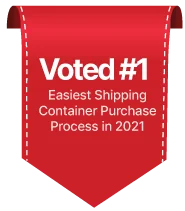Introduction to companies that makes shipping containers
If you’ve ever wondered what companies make shipping containers, you’re not alone. This article will explain what shipping containers are, who makes them, how they’re made, and the standard size of each.
If you’re wondering what steel is used to make them, we’ll go over the basics. We’ll also touch on what types of containers are available and why they’re important. By the time you’re finished, you’ll be a shipping container expert.
Shippers
If you’re wondering what companies make shipping containers, you’re not alone. More than 250 companies manufacture and deliver these boxes on a daily basis.
Many of these companies ship products around the world. However, there’s a big problem with this business model: they don’t have enough containers. That’s one reason why container shortages are so common.
Some economists blame the recent pandemic for the shortage. A shutdown due to the Coronavirus affected global freight movement and drove up consumer goods prices.
A recent shortage in shipping containers has impacted the delivery of holiday gifts and medical supplies. The shortage has led to delays in manufacturing, which has resulted in a massive shortage.
In addition, inland shipping hubs are already clogged with shipping containers. As a result, exporters are having a hard time finding empty containers to ship their products. This is a problem caused by the shipping container manufacturing system, which is part of a larger industrial process.
While shipping lines are building capacity, the cost of fuel hasn’t kept pace with the demand for shipping containers.
A typical vessel delivered in 2015 can handle 10,000 20-foot-equivalent units, five times the capacity of ships built in the 1990s. This has led to irrational decisions on the part of carriers.
As a result, shipping profits have been incredibly volatile. However, this is no reason to give up on the industry entirely.
Companies that make shipping containers include A.P. Moller-Maersk, Container Company International, Maersk, and Sea-Boat. These companies produce containers for the international shipping industry, which includes commercial, military, and intermodal sectors.
Founded in 1857, Norddeutscher Lloyd is one of the most successful shipping container manufacturers in the world. Its products include reefers, dry containers, tippers, and containerized bodies for white goods.
Manufacturers
China, one of the world’s biggest container manufacturers, has struggled to meet the growing demand for metal boxes. Despite the recent increase in global trade, China’s shipping container shortage has led to rising shipping rates.
This year, Chinese manufacturers are on pace to surpass the previous record of 4.4 million TEUs produced in 2018.
China has been dominating the global container market since 2000, and the top three builders produced 82% of all containers manufactured in the first quarter of this year.
In 1956, Malcolm McLean invented the metal shipping container. It is now estimated that there are 17 million active shipping containers in the world.
China manufactures 97% of all shipping containers, primarily due to the low cost of labor. Globally, about 675 shipping containers are lost at sea every year. However, these figures are likely understated.
Despite the rise in the price of containers, the quality of these containers remains high. You can purchase many good-quality containers in California, Hawaii, and Texas.
According to IHS Markit, the global shipping container market is valued at close to $9 billion, with projected growth of $12 billion by 2027.
Rising demand for international trade and increased trading agreements between countries in the region are driving this growth.
Asia-Pacific is the world’s largest shipping container market, with rapid intra-continental trade and bridging of trading gaps with Europe and North America driving the demand for containerization.
Today, China is the world’s top shipping container producer, producing more than 85% of global shipping containers.
A leader in the Chinese container industry, Singamas has 9 manufacturing facilities across the country. The company’s production capabilities span from dry freight containers to collapsible flat-rack containers to tank and offshore containers.
The company has been in business for over twenty years and its current global revenue of $1.7 billion. Its operations are closely connected to the world’s busiest ports, and its customers include large corporations.
Standardized sizes
Standardized sizes of shipping containers make shipping a breeze. You’ll never have to guess the correct container size again. ISO Standards govern container sizes and specify minimum and maximum dimensions.
Shipping containers can vary in height, width, and length, though the differences are typically less than half an inch. Containers for reefer storage, for instance, are generally bigger and have less tolerance.
The dimensions are also more similar for reefer containers than they are for standard containers.
In the late 1960s, the International Organization for Standardization (ISO) established a set of standards for shipping containers. These standards are essential to smooth international commerce.
Shipping containers are now measured in TEUs, or twenty-foot equivalent units, rather than feet. In the process of developing these standards, shipping companies are held to an exacting standard for their shipping containers.
Not all containers are the same, and some can be longer or smaller than others.
These standards are the starting point for shipping container size specifications. The weights of ISO containers can vary by hundreds of pounds. They are also subject to the strict testing for seaworthiness and compliance with ISO standards.
The dimensions of shipping containers can change significantly from one manufacturer to the next. This can result in inconsistency in the final size of the shipment. The manufacturer can adjust the dimensions to fit their needs, but these modifications can result in a container that is not able to transport the weight and size it was designed for.
In order to make shipping containers as safe as possible, they must comply with standard dimensions. These dimensions are important for maximizing the carrying capacity and stability of the road.
In addition, these standard dimensions make it easier for shipping companies to stack containers. And finally, they are required by law to give each unit a unique identification number.
So, how does it affect your business? This is the basic concept behind the standardization of shipping containers.
Steel
There are two types of shipping containers: those made of steel and those made of aluminum. Both are renowned for their adaptability to various modifications and architecture.
Steel shipping containers are the most common types of containers used in ocean freight.
Aluminum shipping containers, on the other hand, are lightweight and can be easily modified, making them a better choice for offices and storage spaces.
Here are some benefits of steel shipping containers. Here are a few.
Shipping containers are constructed with 7 gauge, 0.187-inch-thick steel, and are equipped with corner castings.
Corner castings are reinforced openings that allow for twist-lock connectivity. Because steel is so strong, shipping containers can be lifted by crane rigs. These containers are also remarkably sturdy.
In addition to their superior strength, they can withstand a variety of conditions, such as earthquakes, fire, and quakes.
One type of steel used in shipping containers is called corten steel. Corten steel, which is also called weathering steel, is known for its resistance to atmospheric corrosion and rust.
Because shipping containers are exposed to both seawater and weather, this is a crucial quality for a shipping container. But it does come with a downside – the steel rusts when exposed to the elements.
Fortunately, there are special primers and paints that can protect them from further corrosion.
Aside from steel, other types of material are commonly used for shipping containers. Aluminum is a secondary material. It is cheaper than steel, but it is not as strong.
Aluminum and steel are also used for making shipping containers. The materials used to make these containers vary considerably.
Among them, aluminum is a good option for shipping goods and steel is a good choice for a container that requires little maintenance. It is also lighter than aluminum, which is great for long-haul transportation.
Corrugated sheets
Corrugated sheets are a type of material used in the construction of shipping containers. They are made of two types of paperboard, corrugated and solid.
Corrugated sheets have an overlap, or crease, that runs along the entire length of the shipping container. Corrugated sheets are measured by their basis weight, which is the weight in pounds per ream of paper.
Corrugated sheets can range in weight from 26 to 42 pounds, depending on the thickness.
The main component of a shipping container is made of Corten steel. Corten steel is different from other types of steel, as it is a mixture of several steel alloys. It resists rust, is weldable and is easy to assemble.
Corten steel is also rustproof, which means it won’t allow rust to penetrate deeply into the container. This means that shipping containers made of corrugated sheets don’t need to be coated with any paint.
The corrugated sheet is cut into various lengths and widths. The inner and outer flaps are cut to varying lengths and then meet in the middle. These boxes are strong, thanks to the double thickness of the corrugated board.
In addition to that, they also have no gaps between the inner and outer flaps. They are reinforced and designed for heavy-duty items. Custom-designed boxes are attractive and will make a lasting impression on your customers.
The wall panels are formed from large steel sheets. After the panels are cut, the metal is stamped to produce the shape of the shipping container. The corrugated sheets add strength to the shipping container.
In addition to the corrugation, the shipping container also contains square tubes, which are welded onto the top and bottom walls. The floor frame is comprised of I-beams.
If you're unsure of the strength of a shipping container, consider its design before purchasing one.






 147 People have requested shipping container pricing this week through TheShip
147 People have requested shipping container pricing this week through TheShip